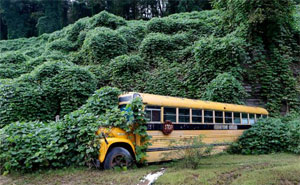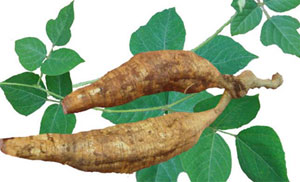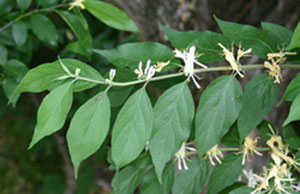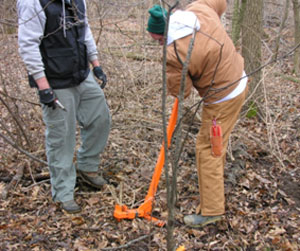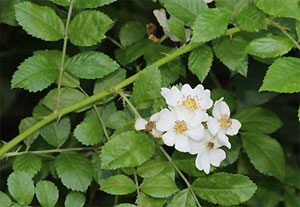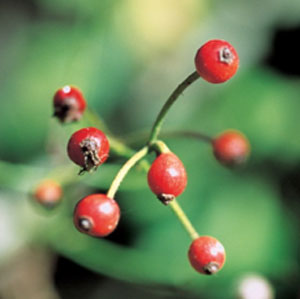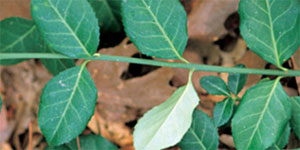Multiflora rose (Rosa multiflora) is a thorny, perennial shrub with arching stems (canes), and leaves divided into five to eleven sharply toothed leaflets. There are a pair of fringed bracts at the base of each leaf stalk. Beginning in May or June, clusters of showy, fragrant, white to pink flowers appear, each about an inch across. Small bright red fruits, or rose hips, develop during the summer. They become leathery and remain on the plant through the winter.
Multiflora rose was introduced to the East Coast from Japan in 1866 as rootstock for ornamental roses. In the 1930s, the US Soil Conservation Service promoted it for use in erosion control and as "living fences" to confine livestock. State conservation departments soon discovered value in multiflora rose as wildlife cover for pheasant, bobwhite quail, and cottontail rabbit and as food for songbirds. They encouraged its use by distributing rooted cuttings to landowners free of charge. However, it is extremely prolific and can form dense thickets that exclude native plant species. This exotic rose readily invades open woodlands, forest edges, and succession disturbed land.
Multiflora rose reproduces by seed and by forming new plants that root from the tips of arching canes that contact the ground. Birds readily seek the fruit and are the primary seed dispersers. The average multiflora rose plant may produce a million seeds per year, which may remain viable in the soil for up to 20 years. Passing through the digestive tract of birds enhances seed germination.
Mechanical and chemical methods are widely used methods for managing multiflora rose. Frequent, repeated cutting or mowing (3 to 6 times per growing season for two to four years) has been effective in killing multiflora rose. In high quality natural communities, cutting of individual plants is preferred to site mowing to minimize habitat disturbance. Various herbicides have been used successfully in controlling multiflora rose. However, long-lived stores of seed in the soil make follow-up treatments necessary. Application of systemic herbicides (e.g., glyphosate) to freshly cut stumps or to regrowth may be the most effective methods, especially if done late in the growing season. Plant growth regulators have been used to control the spread of multiflora rose by preventing fruit set.


